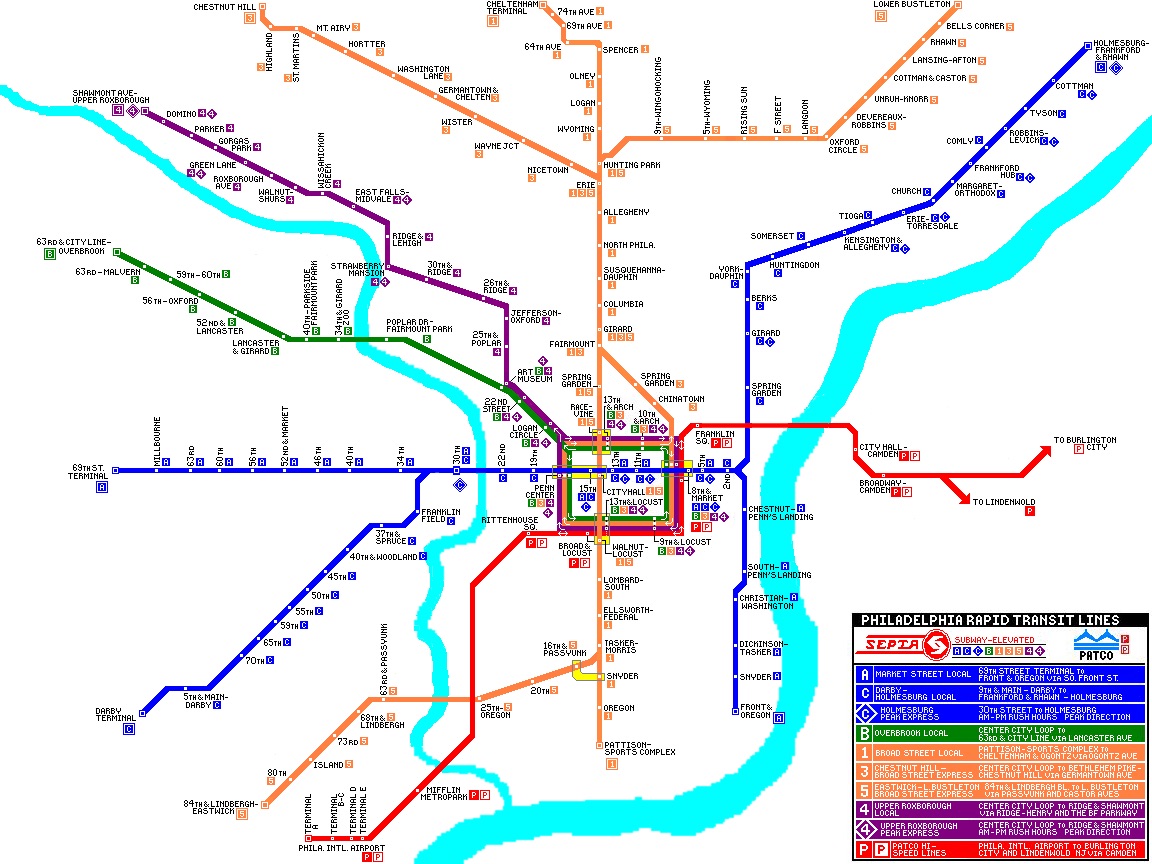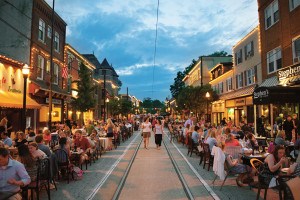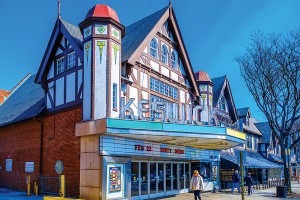What Could Have Been: Proposed Rapid Transit Lines for Philadelphia

Image via Philadelphia Studies (Psssst! Click the image for a closer look!)
GAHH, if only! As a staunch public transit rider who takes both a bus and the El to get from Northeast Philly to Center City (takes anywhere from 45 mins to an hour and a half, depending…well, more on that later), something like the above-pictured rapid transit system would be deeply appreciated by occasionally resentful, but always loyal, commuters like myself.
And no. Much like our Jaw Dropper of the Week home, this is not some silly April Fools’ joke. Rather, it’s a blast from the past found on Michael Krasulski’s Philadelphia Studies blog:
Back in 2002, while on medical leave, I attempted to abstract and post online the annual reports of the Philadelphia Department of City Transit. […] A fellow on the Main Line, whose name I have long forgotten, made this for my website. The map is, mostly, based on the original 1913 plan. He added the airport connection “just because.”
In other words, the map you’re looking at is a modern day illustration of the rapid transit lines proposed by Philadelphia Transit Commissioner A. Merritt Taylor between 1913 and 1915 (except for the airport line, of course). Philebrity notes that when Taylor was drawing up these routes the Market-Frankford Line was still “in its infancy” and the Broad Street Line would not be built for another ten years or so.
Still, as Jim Saksa points out in a tweet, this was all formulated at a time when “we still had streetcars everywhere.” SEPTA went on to acquire these after taking over the system in 1968, but only seven surface lines continued into the early 1970s, “along with the five Subway-Surface Lines that still serve West Philadelphia,” according to Jake Blumgart in this 2012 Inquirer article. Here’s what Blumgart says helped preserve those lines still running in West Philly:
The West Philly lines survived because of their neighborhoods’ unique position across the river from the rest of the city and the tunnel that connected the two areas. Safe underground, the West Philly trolleys could travel far faster than a bus on the street, at least for the half of their routes that included downtown and the universities. This ability to spirit riders from the congested streets of Center City to the residential neighborhoods beyond the universities was a powerful point in the Subway-Surface Lines’ favor.
It’s worth mentioning now that Citified has reported sleek, new trolleys are slated to make their way to Philadelphia, while PlanPhilly says PIDC is looking into extending SEPTA’s Broad Street Line to the Navy Yard. I won’t allow myself to dream just yet, but with those developments and the city’s recent sprucing up (which some think is mostly for the benefit of millennials), it’s kind of hard not to let your imagination wander just a little into the but-could-this-really-happen realm.
Anyway, let a person enjoy the thought, you know? My bus runs on one of the former trackless trolley routes, which means that every once in awhile I’ll miss my train because the overhead wire that keeps the bus running (much like its predecessors) will get dislodged, forcing the driver to pull over to fix it. If that Broad Street Line 5 line on the imaginary map had happened, I’d probably be home in 20 minutes flat, and that’s including the minute it would take to walk from one of its stations to my house. Ugh, what could have been…
https://twitter.com/radiocolin/status/582541065183428608
H/T: Obsession Of The Moment: The (Much, Much Better) Philly Subway System As Proposed In 1913 [Philebrity]


